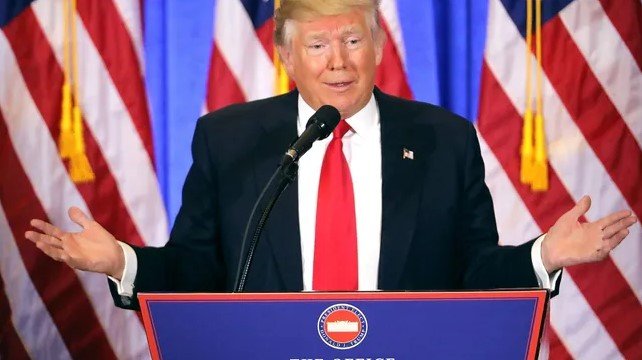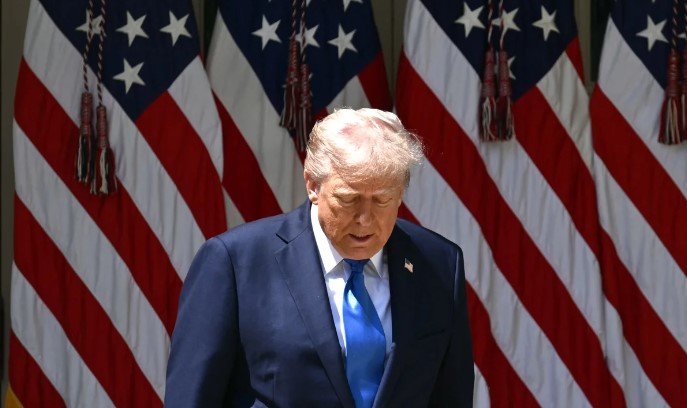Former President’s Proposal Sparks Fierce Debate Over Priorities, With Focus on Military and Economic Growth
In what can only be described as a bold move that brings back old debates regarding the government’s spending priorities, former President Trump has unveiled a 2026 budget proposal that sharply increases spending on the military and tax breaks while reducing expenditures on everything else. The framework, which sets out Trump’s hopes for a 2026-2028 term, advocates slashing funding from the environment, education, healthcare, and even foreign aid. Reaction has been equally divided between praise from Republicans and progressive leaders and public policy analysts.
A Vision Centered On “Strength and Prosperity”
While speaking at a press conference that was conducted at his Mar-a-Lago Resort, Trump claimed that the budget policy is a “bold reset” aimed towards increasing the strength of America on both military and economic fronts. “Our country must be strong, safe, and focused on the future,” he stated. “That means we invest in what matters most — our national defense, our borders, and our economy—and cut the wasteful, bloated programs that do nothing but weaken us.”
The plan boosts spending on defense by roughly 7%, setting aside roughly $950 billion for the Pentagon. This includes spending for new arms, more naval activity, and the construction of technologies for space defense. On the other hand, the Environmental Protection Agency (EPA), the Department of Education, and the Department of Health and Human Services face funding cuts of between 15% to 30%.
Areas Where Funding is Most Severely Reduced
The budget proposal’s reduction of social spending, on the other hand, might attract a lot of controversy. Proposed spending cuts include:
Education: The federal grant funding the basic and post-secondary education will be reduced, alongside the Pell grant, by 20%. This, critics say, will hurt millions of students, especially those hailing from low-income families.
Healthcare: The proposed budget suggests restructuring Medicaid by changing federal contributions to a block grant system with an annual spending cap. Analysts believe this may increase access challenges for vulnerable populations.
Environmental Programs: The budget for the EPA would receive nearly 25% less funding, greatly diminishing spending on climate change research, environmental enforcement, and the development of clean energy.
Foreign Aid: American foreign assistance programs would be cut more than 40%, with Trump saying, “America needs to stop sending billions overseas when we have so many problems at home.”
Public Broadcasting and Arts: All funding for the Corporation for Public Broadcasting, the National Endowment for the Arts, and other analogous organizations would be cut entirely.
In the blueprint, all these funding cuts are regarded as useful in the elimination of the national deficit alongside encouraging private sector stimulus.

Economic Stimulus and Tax Reform
The budget balances the reduction in federal social spending with an equally aggressive economic stimulus package centered around tax cuts. Among the proposed changes are:
Permanent Extension of 2017 Tax Cuts: Trump aims to make the Tax Cuts and Jobs Act of 2017 permanent, especially the sections that aid corporations and high-income earners.
Capital Gains Reduction: Encouraging investment is a capital gains tax cut, which is part of the plan.
Small Business Incentives: To foster small business entrepreneurship, new tax credits and reduced regulations will be provided.
His defense says these reforms will “unleash American potential,” as they estimate a growth in employment opportunities and an increase in creativity and innovation. On the other hand, most economists highlight that such an approach deepens the wealth gap among Americans.
Political and Public Response
The response of Opponent Democrats was swift–it labeled the budget as a public welfare sink. Senate Chuck Schumer, Leader (D–NY) did not mince words when he uttered the proposal is “cruel and reckless,” while adding, “It takes from working families to give to weapons manufacturers and billionaires. We will fight this tooth and nail.”
Hakeem Jeffries, the House Minority Leader, agreed, stating these cuts would “gut the American Dream” for millions. “This budget blueprint is out of touch with reality and hurts the very people Trump claims to represent,” he defended.
But in their defense, a lot of Republican Congressmen and right-wing advocacy groups clapped in unison, calling the spending plan a dreaded yet overdue recalibration for government expenditure. Senator Josh Hawley (R-MO) said, “President Trump is taking bold action to reverse the runaway deficit and secure America’s future.”
Effects on the Elections of 2026
The budget release date, coming before the 2026 midterm elections, seems to be working well with their strategy. Analysts of the political sphere think that Trump is trying to mobilize fiscal conservatives, veterans, and business executives by using the budget announcement as a rallying cry – a form of propaganda – to charge his supporters. “It’s not just a budget document; it’s a political manifesto,” noted Lara Reynolds, a political strategist at the Brookings Institution. “With a new campaign in sight, Trump is marking his territory and making it clear what a contested election would imply for the United States.”
There are, however, some difficult obstacles. Independent voters, alongside suburban moderates who are crucial for swing states, may find such deep cuts too aggressive. Voters consider the national debt to be an issue, but they also consider education, healthcare, and climate change to be priorities, all areas that face Trump’s power cuts.
What Comes After This?
As a simple outline lacking concrete power as an official federal budget, Trump’s 2026 proposal cannot be enforced. Nevertheless, it illustrates his priorities for the office, should he be elected. Republicans in Congress will most likely take this document as one of the primary building blocks for their bipartisan budget and keep it in mind for the election season.
In the following weeks, Congressional Democrats are expected to issue their counterproposal centered on “people-first spending,” which encompasses expanded childcare assistance, student debt forgiveness, and investments into green infrastructure.
At the same time, advocacy groups from all over the nation are beginning to take action. Educators’ trade unions, environment-focused activist groups, as well as health care collectives, have already formed plans for countering the proposed budget cuts through protests and lobbying.
Table of Contents
A Budget That Defines a Movement
The proposed budget by Trump for the year 2026 serves as much more than an outline for expenditures, it gives insight into his political views as well. In his vision of the world, the government is smaller, the military much stronger, and the economy is based on free-market principles. This aligns with many conservatives seeking the lowering of regulations, reduced taxes, and spending of government spending, but is worrisome for those who fight for social programs, environmental policy, and international relations.
Amidst this growing debate, it is unquestionable that conversations surrounding this budget will dominate political discussions in the US for many years ahead.”



